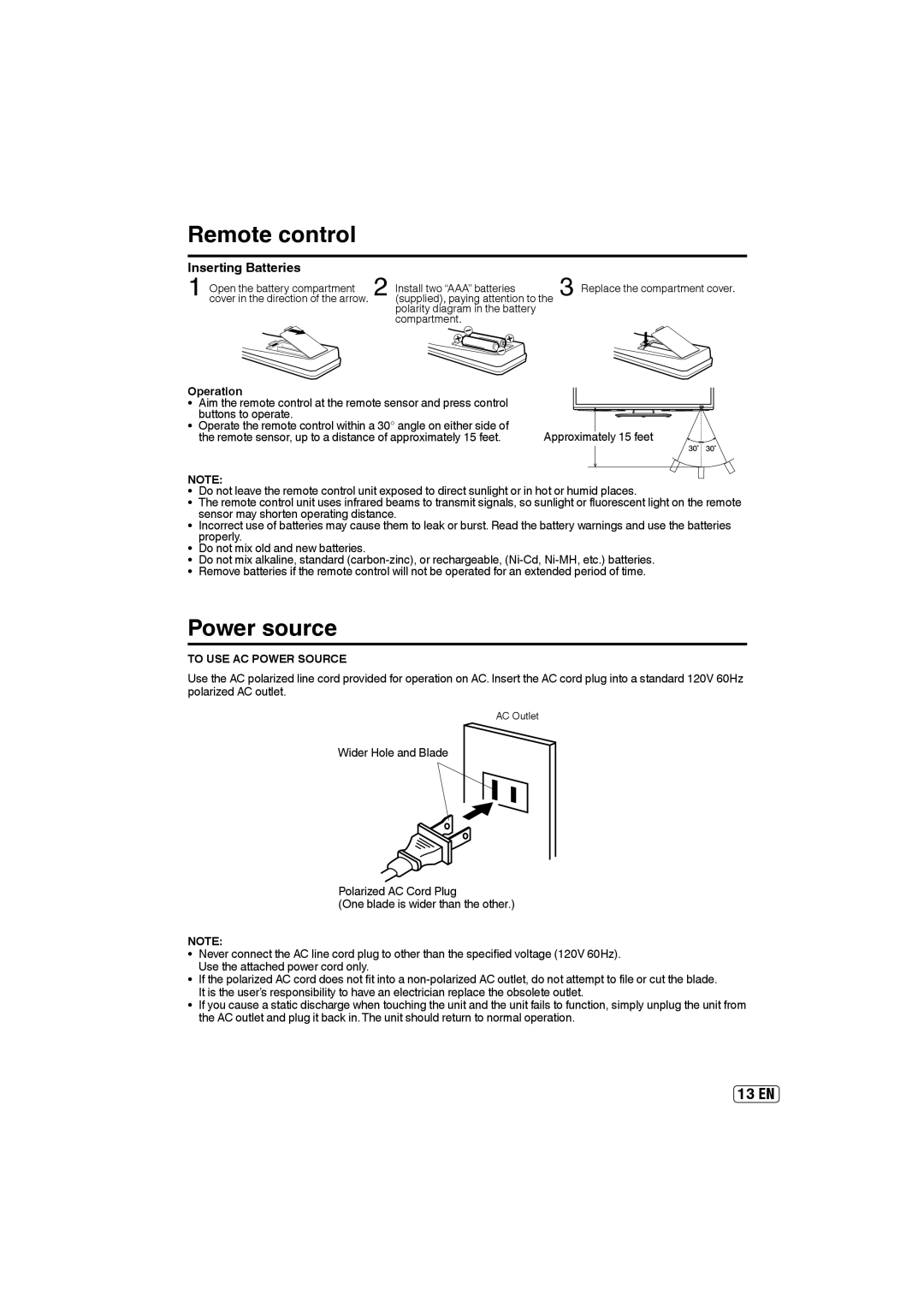
Remote control
Inserting Batteries
| Open the battery compartment | Install two “AAA” batteries |
| Replace the compartment cover. |
1 cover in the direction of the arrow. 2 | (supplied), paying attention to the 3 |
| ||
|
| polarity diagram in the battery |
|
|
|
| compartment. |
|
|
Operation |
|
|
| |
• | Aim the remote control at the remote sensor and press control |
|
| |
• | buttons to operate. |
|
|
|
Operate the remote control within a 30° angle on either side of | Approximately 15 feet | |||
| the remote sensor, up to a distance of approximately 15 feet. | |||
NOTE: |
|
|
| |
• | Do not leave the remote control unit exposed to direct sunlight or in hot or humid places. | |||
• | The remote control unit uses infrared beams to transmit signals, so sunlight or fluorescent light on the remote | |||
| sensor may shorten operating distance. |
|
| |
• Incorrect use of batteries may cause them to leak or burst. Read the battery warnings and use the batteries | ||||
• | properly. |
|
|
|
Do not mix old and new batteries. |
|
|
| |
• | Do not mix alkaline, standard | |||
• | Remove batteries if the remote control will not be operated for an extended period of time. | |||
Power source
TO USE AC POWER SOURCE
Use the AC polarized line cord provided for operation on AC. Insert the AC cord plug into a standard 120V 60Hz polarized AC outlet.
AC Outlet
Wider Hole and Blade
Polarized AC Cord Plug
(One blade is wider than the other.)
NOTE:
• Never connect the AC line cord plug to other than the specified voltage (120V 60Hz). Use the attached power cord only.
• If the polarized AC cord does not fit into a
• If you cause a static discharge when touching the unit and the unit fails to function, simply unplug the unit from the AC outlet and plug it back in. The unit should return to normal operation.
13EN
